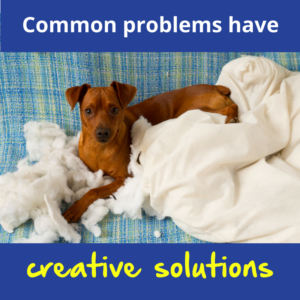Thinking creatively is the foundation to good design. You never know what ideas you might come up with, and inspiration can be found anywhere.
I’ve been the proud parent of a chocolate labrador named Gemma for over a year now. At first, Gemma had a hard time getting used to her crate. She is a strong dog, and she likes to chew things. I came home one day and discovered that Gemma had shredded into the pillow in her crate. Stuffing was everywhere. When the problem repeated itself, I knew I needed to come up with a different plan. As an engineer, I know that common problems have creative solutions. I set to work to design a better pet bed.

The challenge with making any kind of mattress is to make sure that the materials are flexible enough to cushion what rests on top. I knew I wanted to use a material that would not make a mess if, and when, my dog chewed through it. Eventually I decided on stuffing two t-shirts with clothes I was no longer wearing. I improved the design by positioning the shirts so that the head of one shirt was on the same side of the bottom of the other shirt. Gemma has been resting comfortably in her crate for months now because I took the time to come up with a better solution.
How could you make a pet bed? Could you design a portable bed that made lying on the floor more comfortable? How might a bed for a cat or dog be different from a bed for a person?
Inventions happen when people see a problem and create a solution. If you would like to encourage a young inventor you know, check out the Curiosity Effect’s Inventing adventure!



